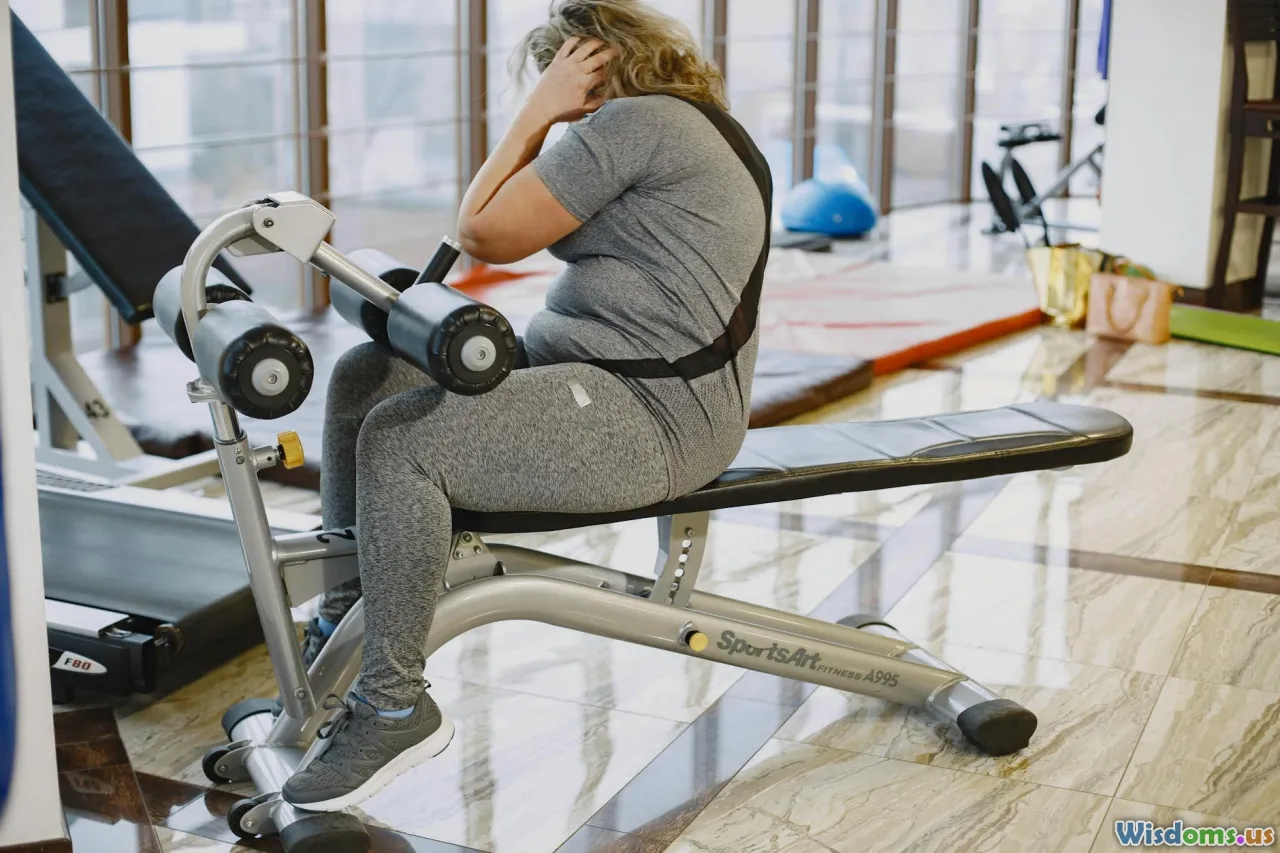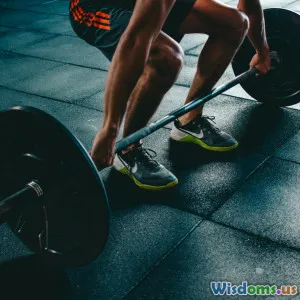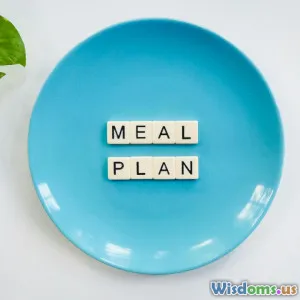
HIIT vs Steady State Cardio Which Burns More Fat
10 min read Discover which burns more fat: HIIT or steady state cardio. Dive into science-backed insights to maximize your workout results. (0 Reviews)
HIIT vs Steady State Cardio: Which Burns More Fat?
When it comes to shedding fat, fitness enthusiasts often find themselves debating between two popular cardio methods: High-Intensity Interval Training (HIIT) and Steady State Cardio (SSC). Both approaches have loyal followers, promising an edge in burning fat and improving cardiovascular health. But which truly reigns supreme for fat loss? Let’s strip back the sweat and science to find out.
The Fat-Burning Battle: Why It Matters
Fat loss is more than just aesthetics; it’s a key driver of overall health, reducing risks of metabolic diseases, improving endurance, and enhancing physical performance. With millions worldwide engaging in cardio exercises, understanding how different modalities impact fat metabolism is pivotal.
Fat Loss Basics
Fat loss is primarily governed by a calorie deficit – burning more calories than consumed. However, the way calories are burned during and after exercise varies by intensity and duration. The challenge lies in finding exercise forms that maximize fat oxidation efficiently without causing burnout or injury.
What is High-Intensity Interval Training (HIIT)?
HIIT involves intense bursts of anaerobic exercise alternated with less intense recovery periods or complete rest. A typical HIIT session might last from 10 to 30 minutes and includes bursts that push you to 80-95% of your maximal heart rate.
Example: Sprinting for 30 seconds followed by 1 minute of walking, repeated 10 times.
Popular Formats: Tabata, Circuit Training, and various interval sprints.
Physiological Effects of HIIT
- Excess Post-exercise Oxygen Consumption (EPOC): Post-HIIT workouts elevate oxygen consumption, boosting calorie burn even after exercising.
- Metabolic Adaptations: Increases in mitochondrial density and improved insulin sensitivity enhance your body’s fat-burning capacity.
- Time Efficiency: A HIIT workout can achieve similar or better fat loss benefits in less time than traditional cardio.
Research Insights on HIIT and Fat Loss
A 2019 meta-analysis in the Journal of Obesity found that individuals engaged in HIIT experienced a significant reduction in total fat mass compared to steady-state training. Another study by Burgomaster et al. (2008) demonstrated an 18% increase in muscle oxidative capacity in just two weeks of HIIT.
What is Steady State Cardio (SSC)?
Steady State Cardio involves maintaining a constant, moderate-intensity level — typically 50-70% of maximal heart rate — for extended periods, generally 30 minutes or more.
Example: Jogging or cycling at a consistent pace for 45 minutes.
Physiological Effects of SSC
- Fat Oxidation During Exercise: Moderate heart rates predominantly use fat as a fuel source during activity.
- Endurance Building: SSC improves cardiac output and muscular endurance.
- Lower Injury Risk: Because of its moderate intensity, SSC is accessible and sustainable for most individuals.
Research Insights on SSC and Fat Loss
Studies indicate steady state cardio efficiently utilizes fat during exercise but with a limited EPOC effect. In a 2015 study, participants engaging in longer sessions of SSC saw reductions in subcutaneous fat. However, total calories burned are often less per unit of time compared to HIIT.
HIIT vs SSC: Calorie Burn & Fat Loss Compared
| Factor | HIIT | Steady State Cardio |
|---|---|---|
| Duration | 10-30 minutes | 30-60+ minutes |
| Intensity | 80-95% max heart rate | 50-70% max heart rate |
| Calorie Burn during | High per minute | Moderate per minute |
| Fat Utilization | Mixed carbohydrate & fat use | Primarily fat during activity |
| Post-exercise Burn | Elevated (EPOC effect) | Minimal to moderate |
Real-World Example
A 70kg individual performing 20 minutes of HIIT may burn around 300 calories, including a prolonged afterburn effect for several hours. Conversely, 45 minutes of steady-state jogging might burn approximately 400 calories, with a lower metabolic increase post-session.
Beyond Burns: Other Factors Impacting Fat Loss
Sustainability & Enjoyment
Long-term adherence is essential for fat loss. Some people find HIIT too intense or exhausting, leading to skipped workouts. Others may find SSC boring and struggle with motivation. Choosing the method you enjoy increases consistency.
Muscle Preservation & Fitness Goals
Research suggests HIIT better preserves lean muscle compared to steady state cardio. If body composition and strength retention are priorities, HIIT may be advantageous.
Risk of Injury
SSC typically has a lower injury risk due to lower intensity. HIIT's explosive movements can strain muscles and joints if form and progression are not carefully managed.
Integrating Both for Optimal Results
Some athletes and fitness experts advocate combining HIIT and SSC to leverage their strengths. For example, incorporating 2-3 HIIT days with steady-state sessions allows for fat loss, endurance improvement, and recovery balance.
Dr. Izumi Tabata, a pioneer of interval training, emphasizes the complementary nature of both:
"Interval training complements endurance training by improving both aerobic and anaerobic systems, maximizing overall fitness."
Conclusion: Which Burns More Fat?
In terms of pure efficiency and total fat-burning potential, HIIT offers a superior afterburn effect and time-saving benefit, making it a powerful tool for fat loss. However, steady-state cardio facilitates fat oxidation during the workout itself and is accessible for longer durations, aiding sustained calorie burn.
Ultimately, the best choice depends on your fitness level, preferences, lifestyle, and goals. If time is limited, HIIT presents a potent method to burn fat and boost metabolism. If you prefer lower intensity or longer sessions with less strain, steady state cardio provides consistent fat-burning benefits.
Pro Tip: Experiment by combining both HIIT and steady state cardio to keep your body challenged, maximize fat loss, and maintain motivation.
Remember, exercise is only one piece of the fat loss puzzle. A balanced diet, quality sleep, and proper stress management will complement your cardio efforts for lasting health and fitness.
References
- Burgomaster KA, et al. (2008). Similar metabolic adaptations during exercise after low volume sprint interval and traditional endurance training. J Physiol.
- Keating SE, et al. (2017). Interval training vs. moderate-intensity continuous training on body adiposity: a meta-analysis. Obes Rev.
- Gibala MJ, et al. (2012). Physiology of endurance exercise and its application to training. Crit Rev Clin Lab Sci.
- Wingfield HL, et al. (2015). Impact of different cardio workouts on fat reduction. J Sports Med Phys Fitness.
Rate the Post
User Reviews
Popular Posts




















